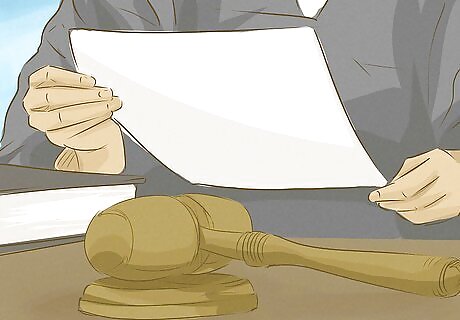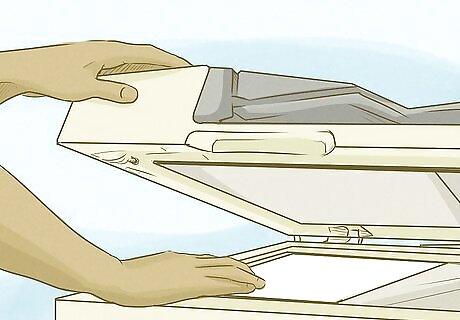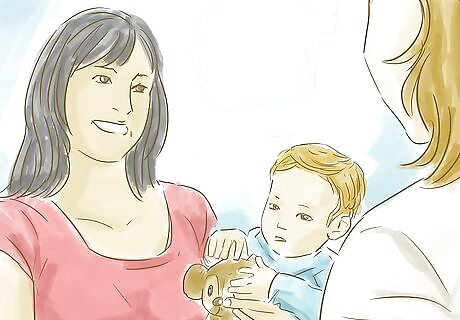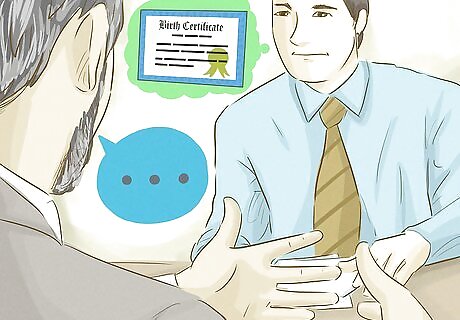
views
Filing for Custody in Divorce or Separation

Work on a parenting plan. During a divorce that involves children, one of the major questions will be who gets custody, and what the non-custodial parent's visitation rights will be. It is best if the plan can be created together with the child's or children's best interests in mind. Remember that change is difficult for children. Try to put aside previous disputes and personal desires, and make rational decisions about the future of the children.

Decide who will get physical custody. Physical custody is defined by who the child lives with. If it is possible for the child to live in a place consistent with where they have been living that is probably preferable to a big move. Remember that handling the child's day to day needs is a major undertaking and you need to have the capacities and resources to handle it on your own.

Decide who will get legal custody. Legal custody is defined by who handles major decisions in the child's life. This does not have to be the same person who has physical custody. For example, one parent can have physical custody while they have joint legal custody. The decisions the legal custodian is responsible for include what schools are attended, which religious institutions, if any, are joined, and what doctors and dentists the child sees.

Talk to a mediator. If you have any trouble reaching agreement, try talking with a third party who can act as a neutral negotiator to help you make the best decisions. A mediator can be a lawyer who understands all the relevant legal details, although they do not have to be. A mediator cannot be an attorney who already represents one of the sides of the divorce. If your difficulties are in resolving emotional disputes, a counselor can act as a mediator to help in putting aside anger and resentment when your child's interests are at issue.

Get a court order. If you come to an agreement or you negotiate a reasonable option through a mediator, but your ex refuses to follow it, you can turn your agreement into a court order. Before you file the forms with a judge, your agreement is binding just between the two of you. Once one of you stops following the agreement, you can bring a legal authority in to enforce matters. If you are unable to come to an agreement, you can return to a mediator. A judge will enforce an agreement that has been reached.

Fill out a Stipulation and Order for Custody and/or Visitation Form. This will need to be signed by both parties and will serve as a legal contract between the two of you. Following the instructions included with your forms, type or print neatly in blue or black ink, filling in each numbered item as necessary. If you are unable to agree on what the details of the custody and visitation form should be, you will need to consult a mediator. California family court services can provide various forms of assistance to help parents come to some kind of contract that best serves the needs of the child or children.

Have your forms reviewed. Before anything is signed, it is best to make sure things are in order and as you intend them. If your county has a family law facilitator, ask that they review your forms before you file them, to ensure that you have completed everything correctly and your case will not be held up due to missing information. You can find your family law facilitator by following the link for your county from the California Court’s Family Law Facilitators List.

Make copies of your forms. When you file a form with the court, make sure you have a copy and the other parent also has a copy.

File the forms with your local court. The court clerk will stamp the original and the copies as "filed" and retain the original document. This means the agreement is legally binding. If the other parent is not holding to the agreement that you reached, you can now take them before a judge with a charge.
Filing for Custody When Facing Domestic Violence

Consider supervised visitation. If there is still interest in maintaining a relationship between the parent and child, a mediator may suggest visitation under strict guidelines. If your child(ren)’s other parent is abusing you, you may ask for both custody and a domestic violence restraining order at the same time.

Fill out a Domestic Violence Restraining Order Form. The forms you need as well as interactive instructions for completing and filing the forms, are provided online. Following the instructions included with your forms, type or print neatly in blue or black ink, filling in each numbered item as necessary. California family court services can provide assistance. Just check with your local county court or online at the California court website.

Have your forms reviewed. You county facilitator can look at forms to make sure that you have filled everything out correctly. You can find your family law facilitator by following the link for your county from the California Court’s Family Law Facilitators List.

Make copies of your forms. You need to make a copy for yourself and for the other parent. The original will be filed with the court.

File the forms with your county clerk. The court will stamp the papers as "filed," keeping the original and returning the copies to you. Once the forms are filed, the court has approved the order and it is legally binding. If you file a restraining order and a custody order, you can then take action against your ex if the stipulations of these are broken.
Filing for Custody in a Paternity Case

Establish parentage. To have full rights to custody or visitation, the father must be recognized as a legal parent. Once paternity is legally recognized, he has rights to custody or visitation, and also the obligation to child support. It is illegal to have a child and not pay toward his or her well-being.

Sign a Voluntary Declaration of Paternity. This is the simplest way to establish paternity. This can be done at your local court, welfare office, family law facilitator or registrar of births. You can also receive the form by mail and sign it before a notary public.

File your Voluntary Declaration of Paternity with the Paternity Opportunity Program (POP). POP is a program in the California Department of Child Support Services that acts as a court. Once your declaration is filed here, the declaration will be legally binding and you will have custody rights. You will need to apply for a new birth certificate with the father's name afterward.

Bring an action to establish parentage. If there is a dispute about who the father is, you will have to talk to your family law facilitator about how to bring an action in your specific case. You can find your family law facilitator by following the link for your county from the California Court’s Family Law Facilitators List.

Fill out a Stipulation and Order for Custody and/or Visitation Form. This will need to be signed by both parties once the father has been established as having the rights and responsibilities of a legal parent. In order to fill out this form, you will need to come to a custody and visitation agreement.

Make copies of your forms. You need to make a copy for yourself and for the other parent. The original will be filed with the court.

File the forms with your county clerk. The court will stamp the papers as "filed," keeping the original and returning the copies to you. Once the forms are filed, the court has approved the order and it is legally binding.
Filing for Guardianship

Decide to seek custody as a non-parent. A guardian can be a grandparent or other relative, or a friend or appointee of the state, who is interested in caring for the child while the parents are unable or unwilling to do so. It is not the same as a full adoption. Adoption legally erases any rights of the birth parents and declares the adopting parents to take on those rights. Guardianship just establishes custody, and leaves the birth parents an avenue to reestablish custody.

Fill out a Petition for Appointment of Guardianship form. The forms you need as well as interactive instructions for completing and filing the forms, are provided online. Following the instructions included with your forms, type or print neatly in blue or black ink, filling in each numbered item as necessary. California family court services can provide assistance. Just check with your local county court or online at the California court website.

Have your forms reviewed. You county facilitator can look at forms to make sure that you have filled everything out correctly. You can find your family law facilitator by following the link for your county from the California Court’s Family Law Facilitators List.

Make copies of your forms. You need to make a copy for yourself as well as both parents and any other relatives or agencies who are concerned with the child. The original will be filed with the court.

File the forms with your county clerk. The court will stamp the papers as "filed," keeping the original and returning the copies to you. Once the forms are filed, the court has approved the order and it is legally in motion.

Give notice to all parties. Serve the copies of the papers to the relatives and agencies who previously were caring for the child. To insure that everyone is fully aware that you have taken custody, the papers must be legally served by someone unconnected to the case, who is 18 years or older, to every concerned party. The server must fill out a "proof of service" form and return this to you. You will need one for each person you are giving notice to, or "serving" the forms to.

File Proof of Service forms with your county. After the papers have been served, the court needs to be notified that everyone involved in the case is aware of the petition. If the server gave the papers to the concerned parties in person, he or she will fill out the Proof of Personal Service form. If the server sent the papers by mail, they will fill out a different form, the Proof of Service by Mail form. Both of these are attached to Notice of Hearing--Guardianship or Conservatorship.

Attend your hearing. You will be granted a hearing at which interested parties will have the opportunity to make statements regarding the motion. There may be an investigation or interview before the official hearing. Arrive on time, answer any questions clearly and politely, and do your best to make a good impression. The judge will then decide whether to grant your petition.

File your court order. If you are granted custody, you need to file the Order Appointing Guardianship of the Child with your county clerk. This confirms that the decision of the judge was what you were seeking and tells the city what has happened. If you do not file the official order it has not been certified. If your petition is granted and certified, you will need to follow up with yearly reports to the court on the status of the child and your guardianship.




















Comments
0 comment